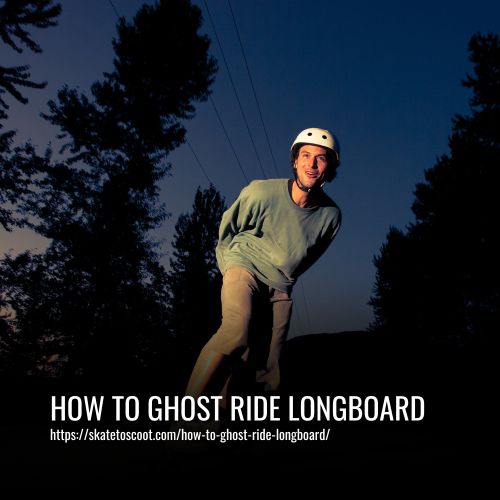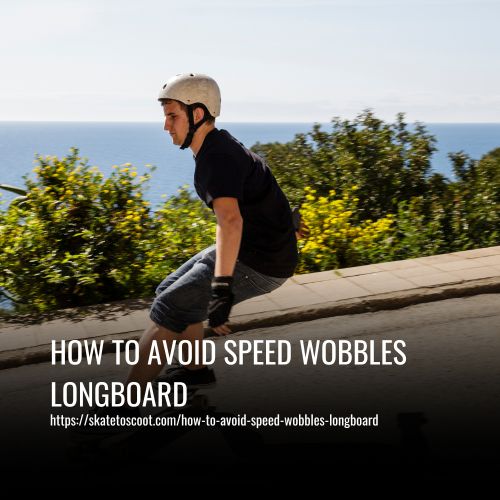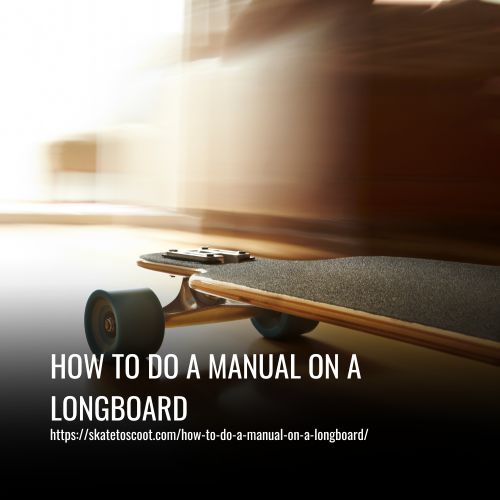As an Amazon Associate we earn from qualifying purchases.
Have you ever seen someone ghost riding a longboard and thought, “That looks so cool, I wish I could do that”? Well, you’re in luck because in this article, I’m going to teach you how to ghost ride a longboard like a pro. Whether you’re a beginner or an experienced rider, ghost riding is a fun and exhilarating trick that will impress your friends and add a new level of excitement to your longboarding adventures.
But before we dive into the steps, let’s talk about what ghost riding actually is. Ghost riding is when a rider steps off their moving longboard and lets it continue rolling on its own while they run alongside or perform other tricks. It requires a combination of balance, coordination, and skill to execute properly. So, if you’re ready to take your longboarding skills to the next level and learn how to ghost ride, let’s get started!
In this article, I will break down the process of ghost riding a longboard into easy-to-follow steps. From choosing the right location to mastering the technique, I will guide you through each stage of the process so that you can confidently and safely ghost ride your longboard. So, grab your board, put on your helmet, and let’s embark on this exciting journey together.

Understanding Ghost Riding Longboard
Ghost riding longboarding is a popular form of skateboarding that has gained immense popularity worldwide.
- The Concept and Origins of Ghost Riding Longboard: Ghost riding involves riding a longboard while stepping off and letting it continue its motion independently. This style of skateboarding originated from the streets and skate parks, where skateboarders aimed to push the boundaries of creativity and self-expression. It showcases a sense of freedom, style, and innovation that sets it apart from traditional longboarding.
- Differences from Traditional Longboarding: Traditional longboarding focuses on maintaining constant contact with the board, while ghost riding incorporates brief moments of separation to showcase the board’s independent movement. This creates a visually engaging experience and enables riders to experiment with new possibilities and tricks.
- Suitable Longboard Types: Choosing the right type of longboard is crucial for ghost riding. Popular options include pintail, drop-through, and cruiser longboards. Pintail longboards, with their classic tapered shape, provide stability and maneuverability, making them ideal for beginners. Drop-through longboards have a lowered deck and mounted trucks, which provide increased stability and control for ghost riding. Cruiser longboards, on the other hand, are known for their compact size and versatility, offering a smooth and enjoyable riding experience.
- Essential Safety Considerations: Ghost riding a longboard can be a thrilling and creative activity, but it’s important to prioritize safety. It is recommended that riders wear appropriate protective gear, including helmets, knee pads, and elbow pads, to prevent injuries. It is also advised to practice in safe environments, such as designated skate parks or open areas without traffic, to reduce the risk of accidents and promote responsible riding.
Learning How To Ghost Ride a Longboard
Learning how to ghost ride a longboard involves mastering the art of combining dance-like movements with freestyle tricks on a longboard skateboard. This unique discipline within the longboarding community requires balance, coordination, and a deep understanding of the board’s dynamics.
Ghost riding, also known as longboard dancing, is not only an exhilarating way to showcase your skills but also a fun and creative expression of individual style. Whether you’re a beginner looking to try something new or an experienced longboarder wanting to expand your repertoire, this guide will provide you with step-by-step instructions on how to ghost ride a longboard.
Learn Basic Techniques First
Before attempting to ghost ride a longboard, it is important to first learn and master the basic techniques. Ghost riding, also known as longboard dancing, involves performing a series of fluid movements and tricks while riding your longboard.
To begin, it is crucial to focus on balance and foot positioning. Find a comfortable stance that suits your style of riding and ensures stability. Your rear foot should be positioned near the tail of the board, while your front foot is placed slightly ahead of the center towards the nose. This positioning allows for better control and maneuverability.
Once you have established proper foot positioning, it is time to work on pushing techniques. Pushing with your rear foot allows you to maintain speed and momentum while moving. This technique is important for executing tricks and transitions.
Practice Moving Around on Your Board in Preparation for Ghost Riding
To prepare for ghost riding on your longboard, it is crucial to practice moving around and familiarizing yourself with the board. This will help you gain balance, control, and confidence for executing tricks and maneuvers.
Start by riding in a straight line and getting comfortable pushing off with your rear foot. Focus on maintaining a steady pace and keeping your movements fluid. This will help you develop a solid foundation for more advanced techniques.
Once you are comfortable riding straight, practice turning by leaning into your turns and using your body weight to guide the board. Experiment with different types of turns, such as carving or sliding, to improve your maneuverability and control on the board.
Start Slow – Master the Basics of Turning and Braking Before You Try Any Tricks
Before attempting any tricks on your longboard, it’s important to start slow and master the basics of turning and braking. This will not only help you gain better control over your board but also prevent accidents and injuries.
As a beginner, it’s essential to focus on learning how to effectively turn and brake. Turning is crucial for maneuvering your longboard, whether you’re cruising around a corner or carving down a hill. Practice leaning into your turns and using your body weight to guide the board. Start with small, gradual turns and gradually increase your speed and the sharpness of your turns as you progress.
Braking is another vital skill to master. While some longboards come equipped with brakes, beginners should learn to use the foot brake technique. To do this, simply drag the sole of your shoe on the ground to create friction and slow down. Practice applying the foot brake at different speeds until you feel comfortable and in control.
Experiment with Different Foot Positions to Find One That Works Best for You
When it comes to ghost riding a longboard, one of the key elements to consider is finding the best foot position that works for you. Experimenting with different foot positions can greatly affect your balance and control while ghost riding. Here are a few foot positions worth trying:
- Parallel Feet: This is the most common and natural foot position for many riders. It involves placing your feet parallel to each other, shoulder-width apart, on the board. This position offers stability and control, making it a good starting point for beginners.
- Crossing Feet: For a more advanced foot position, try crossing your feet while ghost riding. This involves placing one foot in front of the other, with the rear foot crossing over the front foot. Crossing your feet provides a different balance point, allowing for more maneuverability and the ability to perform more complex dancing tricks.
- Squatting Position: Another option to explore is the squatting position. This involves bending your knees slightly and lowering your center of gravity. The squatting position offers increased stability and control, making it suitable for riders looking to perform harder and more technical maneuvers.
Experimenting with different foot positions is essential to finding the one that works best for you. Remember to consider your balance, comfort, and the type of tricks or maneuvers you want to perform while ghost riding. With practice and experimentation, you’ll be able to find your ideal foot position and elevate your ghost riding skills.
Push Yourself to Improve Your Skills as You Progress
Once you have mastered the basic foot positions and are feeling confident on your longboard, it’s time to push yourself to improve your skills as you progress. Here are some advanced techniques and tricks to take your ghost riding to the next level:
- Slides: Sliding is a fundamental skill in longboard dancing. Practice sliding your board by shifting your weight and applying pressure to the edges of your board. Start with small slides and gradually increase the intensity and duration as you become more comfortable.
- Spins: Add a spin to your ghost riding routine by twisting your body and using your hips to rotate the board. Start with a 180-degree spin and gradually work your way up to 360-degree spins or even more complex rotations.
- Flips: If you’re feeling adventurous, try incorporating flips into your dancing routine. Flip the board with your feet by kicking the nose or tail in different directions. Start with simple flips and progress to more advanced tricks like 360-degree flips.
As you challenge yourself with these advanced maneuvers, always remember to focus on proper footwork and body coordination. It’s crucial to maintain a balanced and centered stance throughout each trick. Pay attention to your weight distribution and make sure to stay in control at all times.
Mastering the Basics
Mastering the basics of ghost riding longboarding is important for riders to reach their full potential and execute tricks with skill and precision. Riders should start by concentrating on developing their balance, proper positioning of their feet, and effective pushing techniques.
To mount the board, start by stepping onto it while simultaneously pushing off the ground with your back foot. This will provide the necessary momentum to get moving. When it comes time to dismount, riders should slow down by shifting their weight and then smoothly step off the board.
Weight distribution and body movements are key to maintaining control while ghost riding. Beginners should practice in a safe area, free from traffic, and focus on finding their balance. Gradually increasing speed will help build confidence and stability.
Advanced Techniques and Tricks in Ghost Riding Longboard
In the exciting world of ghost riding longboard, riders have the opportunity to take their skills to new heights with advanced techniques and tricks. These maneuvers, including slides, spins, and flips, allow riders to showcase their creativity and push the boundaries of what is possible on a longboard.
To perform these advanced techniques effectively, it is crucial to focus on proper footwork and body coordination. The starting point is to have a strong foundation in basic ghost riding movements, including maintaining a relaxed and balanced stance with a slight bend in the knees. Weight distribution between the front and back foot should be equal.
Slides are a popular advanced technique that involves intentionally turning the board sideways and gliding across the ground. To execute a slide, riders shift their weight towards the back foot while applying pressure to the edge of the board with their front foot. This maneuver requires practice, but with time, riders can master and control their slides.
Spins, such as the 180s or even the 360s, add a dynamic element to ghost riding. To perform a spin, riders need to initiate a controlled rotation of the board by transferring their body’s momentum and weight. This is achieved by shifting weight and turning the shoulders in the desired direction while maintaining balance on the board.
Safety and Precautions
Ghost riding a longboard can be a thrilling and exhilarating activity, but it is crucial to prioritize safety at all times. By taking necessary precautions, riders can ensure a safe and enjoyable experience.
First and foremost, wearing appropriate protective gear is essential. This includes helmets, knee pads, elbow pads, and wrist guards. These protective gear can help minimize the risk of injuries in case of falls or accidents.
Choosing suitable riding locations is also crucial for safety. Look for areas with smooth surfaces and minimal obstacles. Avoid crowded sidewalks, busy streets, or areas with heavy traffic. It is important to scout the terrain in advance, identifying any potential hazards and adjusting the riding approach accordingly.
Riding within one’s skill level is crucial to preventing accidents. It is important to gradually challenge oneself, learning and mastering basic skills before attempting more advanced techniques. Pushing beyond one’s capabilities can lead to unnecessary risks.
Etiquette and Respect
Etiquette and respect are paramount in the world of ghost riding longboards. It is essential to foster a culture that promotes good manners and shows respect towards fellow riders, pedestrians, and the surrounding environment.
One crucial aspect of skateboarding etiquette is sharing skate spots. Giving the right of way to other riders and being aware of their presence helps create a cooperative and collision-free experience. By respecting other riders’ space and allowing them to enjoy their runs, we can ensure a harmonious skateboarding community.
It is also important to be mindful of others using the same space, such as pedestrians or cyclists. Being considerate and giving them the right of way not only maintains a safe environment but also reflects positively on the skateboarding community as a whole.
Maintaining Your Longboard
To ensure optimal performance and longevity of your longboard, it is important to follow proper maintenance guidelines. By doing so, you can ensure that your longboard remains in excellent condition and provides a smooth and safe riding experience.
- Clean Regularly: Cleaning your longboard regularly is essential for preventing build-up and keeping it looking fresh. To maintain your board’s performance, use a mild detergent and water to remove dirt, debris, and grime from the deck, trucks, and wheels.
- Tighten Bolts: Regularly tighten the bolts on your longboard to ensure stability and minimize the risk of accidents. Loose bolts can lead to wobbly rides and potential mishaps, so it’s important to check and tighten them when needed.
- Inspect for Wear and Tear: Regularly inspect your longboard for any signs of wear and tear. Check the deck for cracks, splintering, or damage, and ensure that all parts are securely attached. Look for loose or worn-out components that may need replacement.
- Check Wheels, Trucks, and Bearings: Pay close attention to the wheels, trucks, and bearings of your longboard. Ensure that the wheels spin freely, the trucks are securely attached, and the bearings are clean and well-lubricated. Any worn-out or damaged parts should be promptly replaced for optimal performance.
- Choose Quality Components: When replacing parts, it is important to choose reputable brands or reliable sources. Conduct thorough research on trustworthy suppliers or seek recommendations from fellow riders. Investing in quality components ensures the longevity and performance of your longboard.
FAQs
Ghost riding a longboard involves stepping off the board while it’s still moving and continuing to let it roll alongside or in front of you. It’s a trick that creates the illusion of the board moving without a rider.
It can be challenging initially. Mastering ghost riding requires good balance, confidence, and practice. Start by getting comfortable stepping off and maintaining control of the board while it rolls.
Absolutely. Always wear proper safety gear such as a helmet and pads. Ensure the riding area is clear of obstacles and pedestrians. Practice in a controlled environment before attempting on busy streets or crowded areas.
To maintain control, practice gradually releasing your weight from the board while keeping a gentle push on it with your foot. Use your foot as a guide to steer and keep the board rolling straight.
With proper technique and care, ghost riding typically doesn’t damage the board. However, excessive wear on the wheels and bearings can occur if done frequently or on rough surfaces.
Start by practicing on flat, smooth surfaces with minimal traffic. Master stepping off the board while maintaining control and gradually increase speed as you gain confidence. Always focus on safety and use your foot to guide the board’s direction.
Conclusion:
Ghost riding a longboard is not just a thrilling stunt, but also a way to have fun and show off your skills. Remember to always prioritize safety, practice in a controlled environment, and push your limits responsibly. So grab your board, embrace the freedom of the ride, and let the adrenaline take you on an unforgettable journey.
Get ready to become the master of ghost riding and leave everyone in awe of your incredible moves! Keep shredding, and may the wind always be at your back!
Amazon and the Amazon logo are trademarks of Amazon.com, Inc, or its affiliates.



